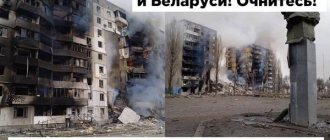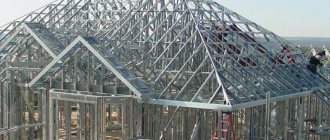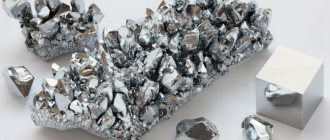History of discovery
The background to the discovery of Ar began in 1785. An outstanding scientist and naturalist from Great Britain, Henry Cavendish, studied the composition of air. He subjected nitrogen to oxidation and weighed the resulting oxides. At the end of the experiment, gas remained in the vessel. Cavendish determined its volume to be 0.8% of the initial volume of air.
The scientist was unable to determine the composition of this gas. A century later, Sirs John Rayleigh and William Ramsay returned to the problem. During their experiments, they discovered that nitrogen released from the air has a higher density than nitrogen obtained during the decomposition reaction of ammonium nitrite.
in 1884 they managed to isolate a certain gas from the air that was denser than nitrogen. This substance had a monatomic molecular structure and was extremely inert - i.e. did not react with other substances.
At a meeting of the Royal Society, the new gas was given the name “argon”, which translated from ancient Greek meant “calm, lazy”
Argon in nature
Due to its almost complete inertness, Ar is present in the natural environment exclusively in unbound form. Its percentage in different parts of the Earth is approximately:
- earth's crust - 0.00012%;
- sea water - 0.00045%;
- atmosphere - 0.926%.
The proportion of Ar in the air is higher than the total proportion of all other inert gases. The main source for its production is our atmosphere.
Content of gases in the atmosphere
Argon is also contained in the Earth's crust in the form of the radioactive isotope Argon-40 and appears during the decay reaction of Potassium isotopes.
Modern science, along with other inert gaseous elements, classifies Ar into group VIII of the periodic table.
Argon crystal lattice:
| 500 | Crystal cell | |
| 511 | Crystal grid #1 | |
| 512 | Lattice structure | Cubic face centered |
| 513 | Lattice parameters | 5.260 Å |
| 514 | c/a ratio | |
| 515 | Debye temperature | 85 K |
| 516 | Name of space symmetry group | Fm_3m |
| 517 | Symmetry space group number | 225 |
How is argon produced?
Due to the industrially significant content of argon in the air, it is obtained as an additional product of the cryogenic distillation of O2 and N2.
The technology is based on the fact that the boiling (or liquefaction) point of Ar lies between the temperatures of N2 and O2.
Before the process begins, the air is thoroughly cleaned of dust in multi-stage filters, dried from water vapor, and then compressed by powerful compressors until it turns into a liquid state. The liquid is distilled in a distillation column to separate it into its individual substances.
Installation for argon production
Nitrogen is the first to evaporate at -195 °C; its vapors are collected on the appropriate rectifier plate and discharged into a separate tank. The next highest (and at a boiling point of -185 °C) is the argon fraction, containing 12% Ar, less than half a percent nitrogen and oxygen. It is fed into the next distillation column, in which the percentage of Ar is brought to 85, the remainder being oxygen with traces of nitrogen. This substance is called raw argon, the starting material for producing purified gas.
Several methods are used in industry to purify raw argon from impurities.
Hydrogen added to the raw material is oxidized by a catalyst and heated to 500 °C, thus removing oxygen from the mixture. The water vapor formed on the catalyst is removed using a moisture separator. The gas is then dried. Argon with the nitrogen remaining in it is rectified again.
Alternative methods for obtaining Ar are also used. During the synthesis of ammonia from nitrogen and hydrogen in chemical reactors, Ar is obtained as a by-product. The technological component of this synthesis - purge gas - contains up to 20% Ar. The calmest element is extracted from this gas. The production cost, which consists mainly of the costs of cooling and heating the components, is divided between ammonia and argon, and is significantly lower.
The quality of the gas obtained by any method is determined by the technology for purifying it from small amounts of residual N2, O2, water vapor and H2.
A device that receives argon ion beams
General characteristics of Ar
Ar belongs to the group of inert gases. The charge of its nucleus is 18; the element is located under the same number in the periodic table.
Of all the members of group VIIIA, it is the most commonly found in nature. The volume fraction of Ar in the atmosphere is 0.93%, the mass fraction is 1.28%. The element is a colorless, tasteless and odorless gas. Chemically inactive - argon does not react and practically does not combine with any elements or substances, with the exception of CU(Ar)O and argon hydrofluoride.
Very poorly soluble in water, slightly greater solubility is observed when interacting with organic solvents.
Types of argon
When talking about types or varieties of Ar, we must understand that these are the same chemical substance. Types differ in the degree of purification from impurities.
- Top grade. Ar content is not less than 99.99%. This grade of especially high purity is used for critical welding work, such as welding materials that are chemically active in a heated state: some non-ferrous alloys, primarily titanium, stainless steel, etc. It is also used for welding highly loaded structural steel products.
- First grade. Ar content not less than 99.98%, used for welding aluminum-based alloys with other metals and alloys, for less active non-ferrous metals.
- Second grade. Ar content not less than 99.95%. Used for welding parts made of heat-resistant steel alloys, aluminum and structural steels. The use of pure Ar in these cases is undesirable, since it leads to increased porosity of the weld material and does not protect the weld pool from high humidity and other contaminants. To avoid the occurrence of such a defect, carbon dioxide and oxygen are added to the mixture of protective gases, which bind the hydrogen and other impurities released during welding. The slags formed during these reactions float to the surface of the weld pool and, after solidification, are removed along with the scale.
Discovery and name of argon:
Argon was discovered in 1894. However, the English scientist Henry Cavendish (1731-1810) predicted the existence of argon 200 years before the discovery of argon. When Cavendish tried to remove oxygen and nitrogen from the air, he found that very little gas remained. He correctly guessed that there was another element in the air, but he could not determine what it was.
When Ramsay repeated Cavendish's experiments in the 1890s, he too discovered tiny amounts of an unidentified gas in the air. But Ramsay had an advantage over Cavendish: he could use spectroscopy, which did not exist in Cavendish's time. Spectroscopy is a process in which emitted light is analyzed by heating an element.
The spectrum (plural: spectra) of an element, which consists of a series of colored lines and is different for each element.
Ramsay examined the spectrum of an unidentified gas. He received a series of lines that did not belong to any other element. He was sure that he had discovered a new element. Meanwhile, Raleigh was doing the same job at almost the same time. He made his discovery around the same time as Ramsay. Both scientists decided to make their statement together. The name argon comes from the Greek word Argos, “lazy.” The name is based on argon's inability to react to anything.
The discovery of argon raised a problem for chemists. Argon was the first noble gas discovered by scientists. Where should this element be on the periodic table? At that time, the periodic table ended with Group 17 (VIIA) on the right. Ramsay suggested that Mendeleev's periodic table might have to be expanded. Ramsay suggested adding a whole new group to the table. This group will be placed to the right of Group 17 (VIIA) on the periodic table.
Ramsay's proposal was accepted, but it created another interesting new problem for chemists. If there was a very new group on the periodic table, where were the other elements that belonged to that group? Fortunately, chemists had a good idea of what these unknown elements might look like. All elements in one group are very similar to each other. Chemists began to look for more inactive gases. Over the next five years, they found the remaining members of the group and added them: helium, krypton, neon, radon and xenon.
Physical and chemical properties
The properties of argon are typical of a member of group VIII.
At ordinary temperatures, Ar is in a gaseous state. The molecule includes a single atom, the chemical formula is very simple: Ar. The boiling point is very low: -185.8 °C at atmospheric pressure.
Solubility in water is low - only 3.29 ml per 100 ml of liquid
The density of argon under normal conditions is 1.78 kg/m3. The molar heat capacity of the gas is 20.7 J/Kmol.
Characteristics of argon and other inert gases
The gas is almost completely inert. To date, scientists have managed to obtain only two of its compounds - CU(Ar)O and argon hydrofluoride. The compounds exist only at ultra-low temperatures. It is assumed that Ar may be part of excimer-type molecules that are unstable in the normal state. Such molecules can only exist in an excited state, for example, during a high-intensity electrical discharge. Such compounds are possible with mercury, oxygen and fluorine.
Electronegativity on the Pauling scale is 4.3.
Both the oxidation state and the electrode potential have a zero value, which is typical for an inert gas.
The ionic radius is 154, the covalence radius is 106 PM. Ionization threshold - 1519 kJ/mol
Atomic and molecular mass
Such important parameters as atomic and molecular masses show how much the mass of a molecule of a substance and the mass of its atom, respectively, exceed a value equal to one twelfth of the mass of a hydrogen atom.
Due to the fact that the Ar molecule consists of a single atom, the molecular and atomic mass of argon are identical and amount to 39.984.
Argon structure and properties
Isotopes
Under natural conditions, Ar occurs as three stable isotopes
- 36Ar – the percentage of this isotope is 0.337% in the nucleus of 18 protons and 18 neutrons;
- 38Ar - its share is only 0.063%, there are 18 protons and 20 neutrons in the nucleus;
- 40Ar is the most common, its share is 99.6%, the nucleus also has 18 protons, but already 22 neutrons.
It was possible to artificially obtain isotopes with a mass index from 32 to 55, the most stable of which was 39Ar, whose half-life is 268 years.
The large percentage of 40Ar among the isotopes found in nature is caused by its constant formation during the decay reaction of the potassium-40 isotope. Per 1000 kg of potassium during such reactions no more than 3100 40Ar atoms are formed per year. But, since these reactions take place continuously over hundreds of millions of years, the isotope has accumulated in nature in significant volumes.
The dominance of the heavy isotope in nature determines the fact that the atomic weight of Ar exceeds the atomic weight of potassium, which is located next to it in the table. When the Periodic Table was created, there was no such contradiction, since argon was discovered and its properties were studied much later, in the first decade of the 20th century. Ar was initially placed in the first group of the table; the eighth group was allocated later.
Ions
Like other noble gases (such as He and Ne), Ar is susceptible to ionization. When atoms are excited and given high energies, molecular Ar2+ ions appear.
Molecule and atom
For inert gases, these concepts are identical, since these elements do not want to enter into a chemical bond even with their own kind. The molecule includes one atom, the chemical formula of the gas does not differ from the designation of the element: Ar.
Molar mass
The molar mass of argon is 39.95 g/mol.
There are several methods for calculating it:
- Using the relative atomic mass M and the proportionality coefficient k, expressing the relationship between the relative mass and the molar mass. This coefficient is a universal constant and is equal for all elements. Molar mass M is expressed as the product of the proportionality coefficient and the relative mass.
- Using molar volume. You will need to find the volume occupied by a certain mass of gas under normal conditions, then calculate the mass of 22.4 liters of the substance under the same conditions.
- Using the Mendeleev-Clapeyron equation simulating an ideal gas.
pV = mRT / M,
Having carried out the transformations, we obtain the expression for the molar mass:
M=mRT/pV
Where
- p – pressure in pascals,
- V – volume in cubic meters
- m – mass in grams,
- T - temperature in Kelvin,
- R is a constant whose value is 8.314 J/(mol×K).
Argon connections
Some other observed binary ions containing argon include BaAr 2+ and BaAr.2+ 2 , [119] VAr + , CrAr + , FeAr + , CoAr + and NiAr + . [5]
Cluster ions of gold and silver can bind argon. Known ions are Au 3Ar+, Au 3Ar+ 2, Au 3Ar+ 3, Au 2AgAr+ 3 and AuAg 2Ar+ 3. They have a triangular shaped metal core with argon at the vertices. [2]
It is also known [5] that ArF + is formed in the reaction
F+ 2+ Ar → ArF + + F
and
Ar + + F 2 → ArF + + F.
and
SF 2+ 4+ Ar → ArF + + SF + 3. [120]
The ions can be produced by ultraviolet light with a wavelength of 79.1 nm or less. [121] The ionization energy of fluorine is higher than that of argon, so the decay occurs as follows:
ArF + → Ar + + F. [122]
The ArF+ millimeter wave spectrum between 119.0232 and 505.3155 GHz was measured to calculate the molecular constants B
0 = 14.878 8204 GHz,
D
0 = 28.718 kHz. [123] There is a possibility that the solid ArF+ salt could be prepared with SbF- 6 or AuF- 6 anions. [122] [124]
Excited or ionized argon atoms can react with molecular iodine gas to form ArI+ [125]. Argon plasma is used as an ionization source and carrier gas in inductively coupled plasma mass spectrometry. This plasma reacts with the samples to form monoatomic ions, but also produces argon oxide (ArO+) and argon nitride (ArN+) cations, which can cause isobaric interference in the detection and measurement of iron-56 (56Fe) and iron-54. ( 54 Fe) respectively in mass spectrometry. [126] Platinum present in stainless steel can form platinum argide (PtAr+), which interferes with the detection of uranium-234, which can be used as a tracer in aquifers. [127] Argon chloride cations can interfere with arsenic detection, since Ar 35 Cl + has a mass-to-charge ratio almost identical to that of one stable isotope of arsenic, 75 As. [128] Under these conditions, ArO + can be removed by reaction with NH 3 . [129] Alternatively, electrothermal evaporation or the use of helium gas can avoid these interference problems. [126] Argon can also form an anion with chlorine, ArCl - , [130] although this is not a problem for mass spectrometry since only cations are detected.
The argon boronium ion, BAr+, is formed when BBr+, at energies between 9 and 11 eV, reacts with argon atoms. 90% of the positive charge is on the argon atom. [131]
ArC+ ions can be formed when argon ions strike carbon monoxide with energies ranging from 21 to 60 eV. However, more C+ ions are produced, and when the energy is high, O+ is higher. [132]
ArN+ can be formed when argon ions strike dinitrogen with energies ranging from 8.2 to 41.2 eV with a maximum around 35 eV. However, much more N+ 2 and N+ are produced. [133]
ArXe+ is held together with a force of 1445 cm -1 when it is in the X electronic state and 1013 cm -1 when it is in the B excited state.[33]
Metal cations - argon are called "argids". Argide ions produced during mass spectroscopy have higher intensity when the binding energy of the ion is higher. Transition elements have higher binding intensity and ion flux compared to main group elements. Argides can be formed in plasma when excited argon atoms interact with an atom of another element or when an argon atom binds to another ion:
Ar + + M → ArM + + e - ; M + + Ar → ArM + . [134]
Doubly charged cations, called superelectrophiles, are capable of reacting with argon. The ions produced include ArCF2+ 2 ARKA+ 2, ArBP+ 2 and ArBP2+ containing bonds between argon and carbon or boron. [135]
Doubly ionized acetylene HCCH 2+ reacts inefficiently with argon to form HCCAr 2+ . This product competes with the formation of Ar+ and argonium. [136]
SiF2+ 3 ion reacts with argon to form ArSiF2+ 2. [137]
| And he | Bond length (Å) | Dissociation energy (kJ/mol) [5] | Excited state bond length (Å) | Excited state dissociation energy |
| ArH+ | 3.4 eV | |||
| LiAr+ [134] | 2,343 | 0.30 eV | ||
| BeAr + [134] | 4100 cm -1 [138] | |||
| BAr+[131] | 2,590 | 210 | ||
| ArC+ [139] | ||||
| ArN+ [134] | 3.5 | 2.16 eV [140] | ||
| ArO+ [134] | ||||
| ArF+ [122] | 1,637 | 194 | ||
| NaAr+[134] | 19,3 | |||
| MgAr+ [134] | 2,88 [141] | 1200 cm -1 [138] | ||
| AlAr+ [134] | 982 cm -1 [142] | |||
| SiAr+ [134] | ||||
| ArP+ [134] | ||||
| ArS+ [134] | ||||
| ArCl+ [134] | ||||
| Ar+ 2[134] | ||||
| CaAr+ | 700 cm -1 [138] | |||
| ScAr+ [134] | ||||
| TiAr+ | 0.31 eV [143] | |||
| VAr + | 2,65 [144] | 37, D 0 = 2974 cm -1 [141] | ||
| CrAr+ | 28, D 0 = 2340 [141] | |||
| MnAr + [134] | 0.149 eV [143] | |||
| FeAr+ | 0.11 eV [143] | |||
| CoAr+ [144] | 2,385 [145] | 49, D 0 = 4111 cm -1 [145] | ||
| NiAr+ | 53, D 0 = 4572 [141] | |||
| CuAr+ [134] | 0.53 eV [143] | |||
| ZnAr+ | 2,72 [146] | 0.25 eV, [143] D 0 = 2706 cm -1 [146] | ||
| GaAr+ [134] | ||||
| AsAr+ [134] | ||||
| RbAr+ [147] | ||||
| SrAr+ | 800 [138] | |||
| ZrAr+ | 2,72 | D 0 = 2706 cm -1 [146] | 3,050 | 1179 cm -1 |
| NbAr+ | 2,677 [141] | 37, D 0 = 3106 cm -1 [141] | ||
| AgAr+ [134] | ||||
| InAr+ [148] | ||||
| ArI+ [125] | ||||
| BaAr+ | 600 cm -1 [138] |
Polyatomic cations
Metal ions can also form with more than one argon atom in the form of an argon metal cluster. Metal ions of different sizes at the center of the cluster may correspond to different geometries of argon atoms around the ion. [148] Argids with multiple argon atoms have been detected by mass spectrometry. They can have a variable amount of argon attached, but there are magic numbers where the complex more often has a specific number, four or six argon atoms. [149] They can be studied using time-of-flight mass spectrometry analysis and photodissociation spectra. Other research methods include Coulomb explosion analysis. [150] Argon tagging is a technique in which argon atoms are weakly bound to the molecule of interest. This results in much lower temperature labeled molecules with sharper infrared absorption lines. Molecules labeled with argon can be destroyed by photons of a certain wavelength. [151]
Lithium ions add argon atoms, forming clusters with more than a hundred argon atoms. The Li + Ar 4 and Li + Ar 4 clusters are particularly stable and widespread. Calculations show that all small clusters are quite symmetrical. Li + Ar 2 is linear, Li + Ar 3 has a flat triangular shape with D 3h symmetry, Li + Ar 4 is tetrahedral, Li + Ar 5 can be shaped like a square pyramid or a trigonal bipyramid. Li + Ar 6 has the shape of an octahedron with Li at the center. Li+Ar clusters 7 or slightly larger have a core octahedron of argon atoms with one or more triangular faces covered by other argon atoms. The connection is much weaker, which explains their greater rarity. [152]
Sodium forms clusters with argon atoms with peak numbers 8, 10, 16, 20, 23, 25, and 29, as well as icosahedral argon numbers 47, 50, 57, 60, 63, 77, 80, 116, and 147. atoms. These include a square antiprism (8) and a square antiprism with a cap (10 atoms). [148] In Ti + Ar 1 − n, argon atoms cause mixing of the ground electronic state 3d 2 4s 1 with 3d 3 4s 0. When titanium plasma in expanding argon gas is created using a laser, Ti + Ar to Ti + Ar 50 clusters are formed. But Ti + Ar 6 is much more common than all the others. In it, six argon atoms are arranged in an octahedron around a central titanium ion. For Ti + Ar 2, DFT calculations predict that it is linear, Ti + Ar 3 is not even planar and has one short and two longer Ti-Ar bonds. Ti + Ar 4 is a distorted tetrahedron with one longer Ti-Ar bond. Ti + Ar 5 is an asymmetrical trigonal bipyramid shape with one bond shorter. For clusters with seven or more argon atoms, the structure contains a Ti + Ar 6 octahedron with triangular faces covered by a large number of argon atoms. [153]
Cu + Ar 2 is expected to be linear. Cu+Ar3 is expected to have a flat T-shape with an Ar-Cu-Ar angle of 93°. Cu + Ar 4 is expected to be rhombic planar (not square or tetrahedral). For alkali and alkaline earth metals, the M + Ar 4 cluster is tetrahedral. It is assumed that Cu + Ar 5 has the shape of a rhombic pyramid. Cu + Ar 6 has a flattened octahedral shape. Cu + Ar 7 is much less stable, and the seventh argon atom is outside the inner shell of six argon atoms. This is called an octahedral cap. A full second shell of argon atoms gives Cu + Ar 34 . Above this number, a structural change occurs with an icosahedral arrangement, with Cu + Ar 55 and Cu + Ar 146 having greater stability. [154]
With the strontium ion Sr+, two to eight argon atoms can form clusters. Sr + Ar 2 has a triangle shape with C
2v
.
_ Sr + Ar 3 has the shape of a trigonal pyramid with C
3
v
.
Sr + Ar 4 has two trigonal pyramids with a common face and strontium at a common top. C
2
v
symmetry .
Sr + Ar 6 has a pentagonal pyramid of argon atoms with a strontium atom below
the base. [155]
Niobium tetraargide, Nb + Ar 4, probably has argon atoms arranged in a square around the niobium. Similarly for vanadium tetraargide V + Ar 4 . The hexaargides Co + Ar 6 and Rh + Ar 6 probably have an octahedral arrangement of argon. [149] The indium monocation forms clusters with many argons with magic numbers of 12, 18, 22, 25, 28, 45 and 54 and 70 argon atoms, which are the numbers for icosahedral shapes. [148]
By exposing copper metal to a UV laser in a mixture of argon and carbon monoxide, argon-labeled copper carbonyl cations are formed. These ions can be studied by observing which wavelengths of infrared radiation cause the molecules to split apart. These molecular ions include CuCO+Ar, Cu(CO)2+Ar, Cu(CO)3+Ar, Cu(CO)4+Ar, which are respectively disrupted to lose argon by infrared wavenumbers 2216, 2221 , 2205 and 2194 cm −1, respectively. The binding energy of argon is 16.3, 1.01, 0.97 and 0.23 kcal/mol, respectively. The infrared absorption peak for Cu(CO)3+Ar is 2205 cm -1 compared to 2199 cm -1 for Cu(CO)3+. For Cu(CO)4+Ar the peak is at 2198 cm -1 compared to 2193 for Cu(CO)4+. For Cu(CO) 2 + Ar the peak is at 2221 cm -1 compared to 2218.3 for argon-free, and for CuCO + Ar the peak is at 2216 cm -1, significantly different from 2240.6 cm -1 for CuCO +. The shapes predicted by calculations for these molecular ions are linear for CuCO+Ar, a slightly curved T-shape for Cu(CO)2+Ar, and a triangular pyramid with argon at the top and a flat star like copper tricarbonyl forming the base. [156]
Ions studied with argon include hydrated proton H+(H2O)nAr with n = 2 to 5, [157] hydrated alkali metal ions 18-crown-6 ether, [158] hydrated alkali metal ions, [159] transition metal acetylene complexes, [160] protonated ethylene, [161] and IrO 4 + . [162]
Argon methyl cations (or methyliumargon) Ar x CH 3+ are known for n = 1 to 8. CH 3+ is a Y-shape and when argon atoms are added they move above and below the Y plane. If more argon atoms are added , they line up with the hydrogen atoms. ΔH _
0 for ArCH 3 + is 11 kcal / mol, and for Ar 2 CH 3 + - 13.5 kcal / mol (for 2Ar + CH 3 +). [163]
Cationic complexes of the boroxyl ring with argon [ArB 3 O 4 ] + , + , + and + were obtained using
laser evaporation at cryogenic temperatures and studied using infrared radiation. gas-phase spectroscopy. [3] They were the first large, stable gas-phase complexes that exhibit a strong dative coupling between argon and boron.
Medicines
Dicats with argon are known for coining metals. Known dications include CuAr n 2+ and AgAr n 2+ for n = 1-8, with the maximum presence of CuAr 4 2+ or AgAr 4 2+ and AuAr n 2+ n = 3-7. In addition to the four argon atoms, clusters of six argon atoms have an increased concentration. The stability of ions with two positive charges is unexpected because the ionization energy of argon is lower than the second ionization energy of the metal atom. Thus, the second positive charge of the metal atom must move into the argon, ionize it, and then form a strongly repulsive molecule that will undergo a Coulomb explosion. However, these molecules appear to be kinetically stable and must pass through a higher energy state to transfer charge to the argon atom. [164] Clusters with four argon atoms are expected to be square, and clusters with six are expected to be octahedral, distorted by the Jahn-Teller effect.
| And he | Energy of first ionization of metal, eV | Second metal ionization, eV | binding energy eV [164] | Dissociation energy (kJ/mol) | Bond length (Å) |
| Cu 2+ Ar | 7,73 | 20,29 | 0,439 | 2,4 | |
| Ag 2+Ar | 7,58 | 21,5 | 0,199 | 2,6 | |
| Au2+Ar | 9,22 | 20,5 | 0,670 | 2,6 |
Polyatomic anions
Spherical model of the complex of the superelectrophilic anion [B 12 (CN) 11 ] - with Ar. The B12 core has symmetry close to icosahedral. B - pink, C - gray, N - blue, Ar - blue.
Examples of anions containing strong bonds to noble gases are extremely rare: usually the nucleophilic nature of anions results in their inability to bind to noble gases with their negative electron affinities. However, the 2022 discovery of "superelectrophilic anions", [165] gas-phase fragmentation products of close
- dodecaborates, led to the discovery of stable anionic compounds containing boron-noble gas bonds with a significant degree of covalent interaction. It has been reported that the most reactive superelectrophilic anion, a product of fragmentation of the cyanated [B 12 (CN) 12 ] 2- , cluster, spontaneously binds argon at room temperature. [4]
Application area
Argon is most widely used for welding. It is used to create a protective atmosphere around the weld pool, displacing O2 and N2 contained in the atmosphere from the working area. This is especially important for welding non-ferrous metals, many of which, for example, Ti, are characterized by high chemical activity when heated. Inert gas is also indispensable for permanent connections of stainless and high-alloy alloys.
It is also widely used in the installation of highly loaded building structures, such as frames of high-rise buildings, bridge trusses and many others. Here its use ensures high quality, uniformity and durability of critical connections. In the construction industry, argon welding dominates among other methods.
Argon welding
Argon arc welding
Argon welding is no less widely used in mechanical engineering, primarily in the chemical and food industries. The seams are durable and reliable, even when exposed to aggressive environments.
The oil and gas industries also use argon welding in the installation of pipelines, gas pumping stations and oil refineries.
The method is also used in the nuclear industry, transport engineering and the aerospace industry.
In households, argon welding is not so widespread. This is explained:
- high cost of equipment and consumables;
- the need for sufficient qualification of the welder;
- lower loads experienced by home structures;
- lower requirements for the strength and durability of welded joints.
If a household has an occasional need for such welding work, then it is cheaper, faster and more reliable to invite a specialist welder.
Double-glazed window with argon
The principle of operation of a double-glazed window with argon
A characteristic property of Ar is its higher density compared to air. Therefore, the maximum efficiency of argon welding is achieved in the lower welding position. In this case, the inert substance spreads over the surface of the part and forms a protective cloud of considerable extent, allowing welding to be carried out both with high currents and at high speed. When welding in an inclined and upper position, it is necessary to take into account the “falling through” of argon through the air. To compensate for this phenomenon, either increase the gas supply or carry out work in a sealed room filled with inert gas. In both cases, the cost of work increases.
Since the ionization potential of Ar is low, its use ensures ideal geometric characteristics of the weld, especially the profile. An excited electric arc in an argon atmosphere is also characterized by high stability of its parameters. On the other hand, a low ionization potential also causes a lower arc ignition and maintenance voltage. This reduces its heat generation and complicates the penetration of thick sheets of metal.
The higher arc temperature in an argon atmosphere significantly increases weld penetration. This allows welding to be carried out in one pass, provided that the parameters of the gap between the workpieces are strictly observed.
When using the TIG welding method, the argon atmosphere protects not only the welding zone, but also the end of the infusible electrode from corrosive influences.
In a number of specific cases, helium is added to the protective gas mixture.
In addition to being used for welding, argon is used:
- As a plasma-forming substance in installations for plasma cutting of metal.
- To create an inert environment in food packaging. It displaces air oxygen and water vapor from bags and containers, which adversely affect the shelf life of products. Products in a protective atmosphere are stored several times longer than in conventional packaging. This method is also used for packaging medical products and drugs, allowing them to be kept in proper sterility and chemical purity.
- As an active agent in fire extinguishing installations. Argon displaces oxygen (or other gas) from the combustion site, stopping it.
- To create a protective environment in technological installations when processing semiconductor devices, creating microcircuits and other electronic components or materials of high purity levels.
- Filler for electric lamps.
- In advertising fluorescent tubes.
Application of argon
The use of such a chemical element as argon is not very widespread, but very common. It is worth noting that argon is the most accessible and widespread inert gas. As a consequence of the above, it also turns out to be the cheapest. Its annual global production is about 2 billion cubic meters. It is used whenever it is impossible to use cheaper nitrogen. First of all, these are metal welding processes that react with nitrogen at high temperatures. Such metals are titanium, tantalum, tungsten and others. In addition to welding, argon is widely used in metallurgy as a protective substance. Specifically for the production of high-frequency silicon, titanium, as well as for the degassing of metal alloys.
Argon is also widely used in the food industry as a protective gas for food packaging and wine production. Its nomenclature is on E938 packages. Another fairly widespread use of argon is fire extinguishing. This is especially common in high voltage electrical systems. For these purposes, either pure gas or a mixture with nitrogen is used. Its essence is to displace oxygen. Quite often, a mixture of argon and nitrogen is used as a fill gas for an incandescent lamp. The thing is that this filler reduces the sublimation of the filament.
Read: Silicon as a chemical element on the periodic table
Dependence of argon pressure in a cylinder on temperature
As it heats up, the pressure of the gaseous substance in a closed volume increases. The table shows approximate pressure values in the cylinder depending on the ambient temperature.
| T, °C | P, Megapascal |
| -40 | 10,45 |
| -30 | 11,33 |
| -20 | 12,21 |
| -10 | 12,92 |
| 0 | 13,74 |
| +10 | 14,62 |
| +20 | 15,33 |
| +30 | 16,03 |
It should be borne in mind that the balloon pressure does not change instantly, but as it warms up or cools down.









